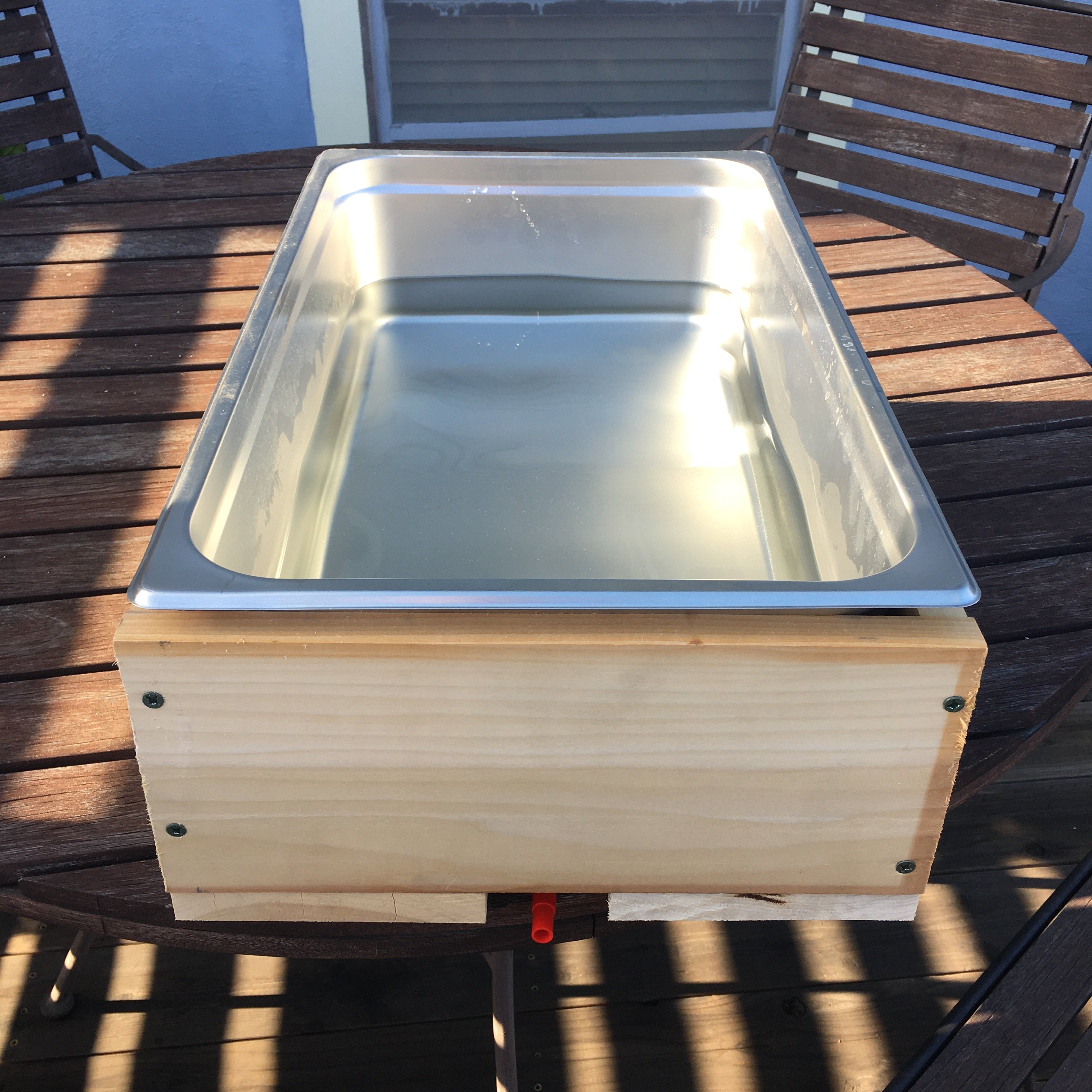kestrelbrewing
Well-Known Member
- Joined
- Jul 12, 2020
- Messages
- 107
- Reaction score
- 49
You know how you can never get that last bit of LME out of the container in time for it to be part of the wort? Well, I started collecting those leftover bits a year or so ago and now I have about 12 lbs of mixed LME along with some random hops from prior brews taking up space in my fridge. I even have some leftover crushed grain I can use as steeping grains. I was considering just mixing up a frankenbeer and use one of my washed yeasts, but I thought if I'm going to make something utterly random, why not go the whole 9 yards and try an ambient fermentation.
I have ordered a 6" deep full sized, stainless steel steam table tray which will comfortably hold 6+ gallons of liquid. My plan is to do a 1 hour boil using 6 lbs of LME (which should yield a guesstimated gravity of around 1.040) and 15 IBU worth of my oldest hops. Then transfer to the steam table tray, cover the whole thing with cheesecloth, and set it in my basement brewery with a fan stuck in the window near the ceiling for airflow.
I have questions for anyone who may have gone down this route:
1. How long should I expect to wait for fermentation to start?
2. Assuming it starts, how long should I let fermentation go on before transferring to a carboy and applying an airlock?
3. Is cheesecloth the right choice here? I want to keep the actual insects out but leave enough of an opening to allow the microscopic bugs to get in.
4. Is the fan really necessary?
Thanks!
I have ordered a 6" deep full sized, stainless steel steam table tray which will comfortably hold 6+ gallons of liquid. My plan is to do a 1 hour boil using 6 lbs of LME (which should yield a guesstimated gravity of around 1.040) and 15 IBU worth of my oldest hops. Then transfer to the steam table tray, cover the whole thing with cheesecloth, and set it in my basement brewery with a fan stuck in the window near the ceiling for airflow.
I have questions for anyone who may have gone down this route:
1. How long should I expect to wait for fermentation to start?
2. Assuming it starts, how long should I let fermentation go on before transferring to a carboy and applying an airlock?
3. Is cheesecloth the right choice here? I want to keep the actual insects out but leave enough of an opening to allow the microscopic bugs to get in.
4. Is the fan really necessary?
Thanks!

































![Craft A Brew - Safale BE-256 Yeast - Fermentis - Belgian Ale Dry Yeast - For Belgian & Strong Ales - Ingredients for Home Brewing - Beer Making Supplies - [3 Pack]](https://m.media-amazon.com/images/I/51bcKEwQmWL._SL500_.jpg)














